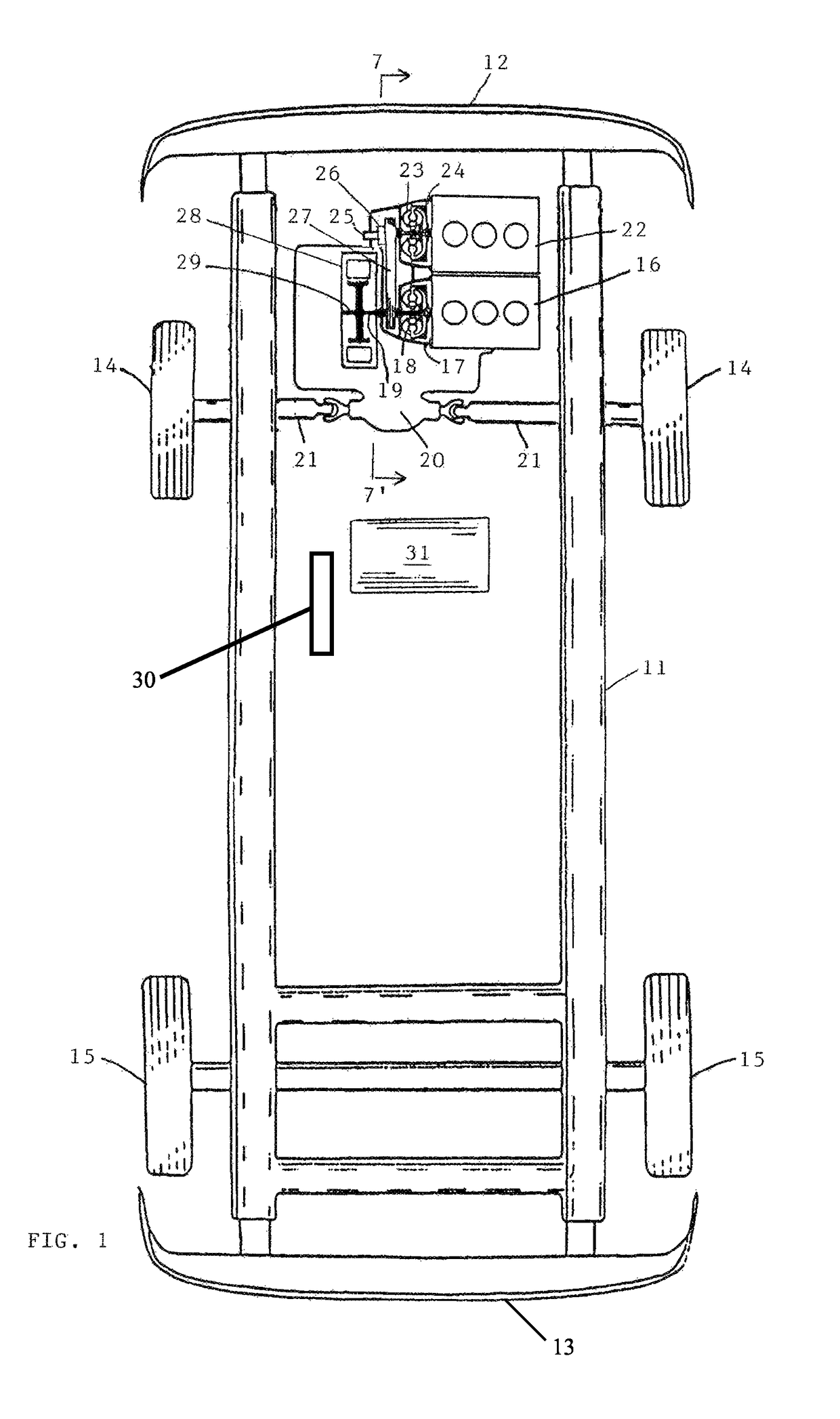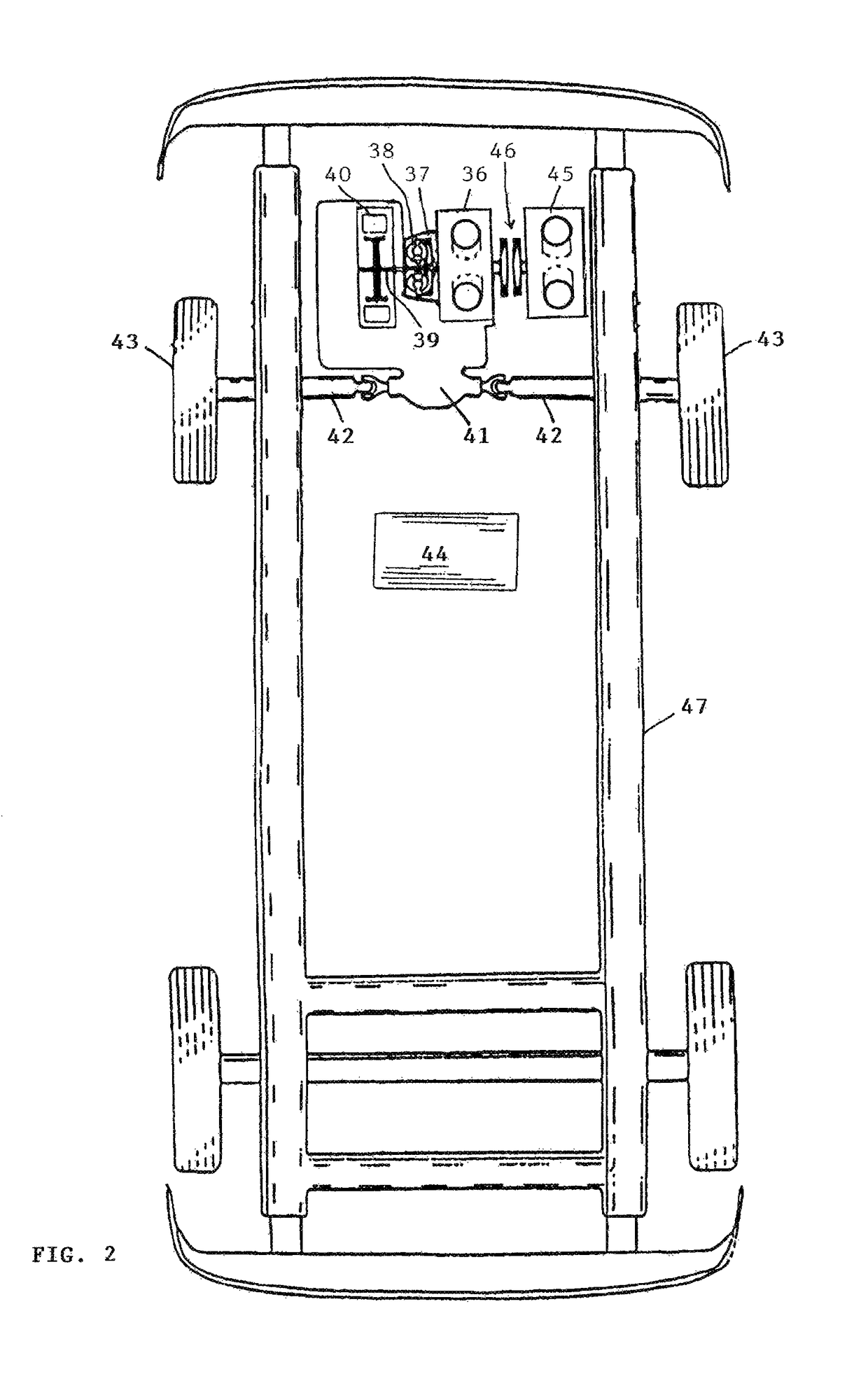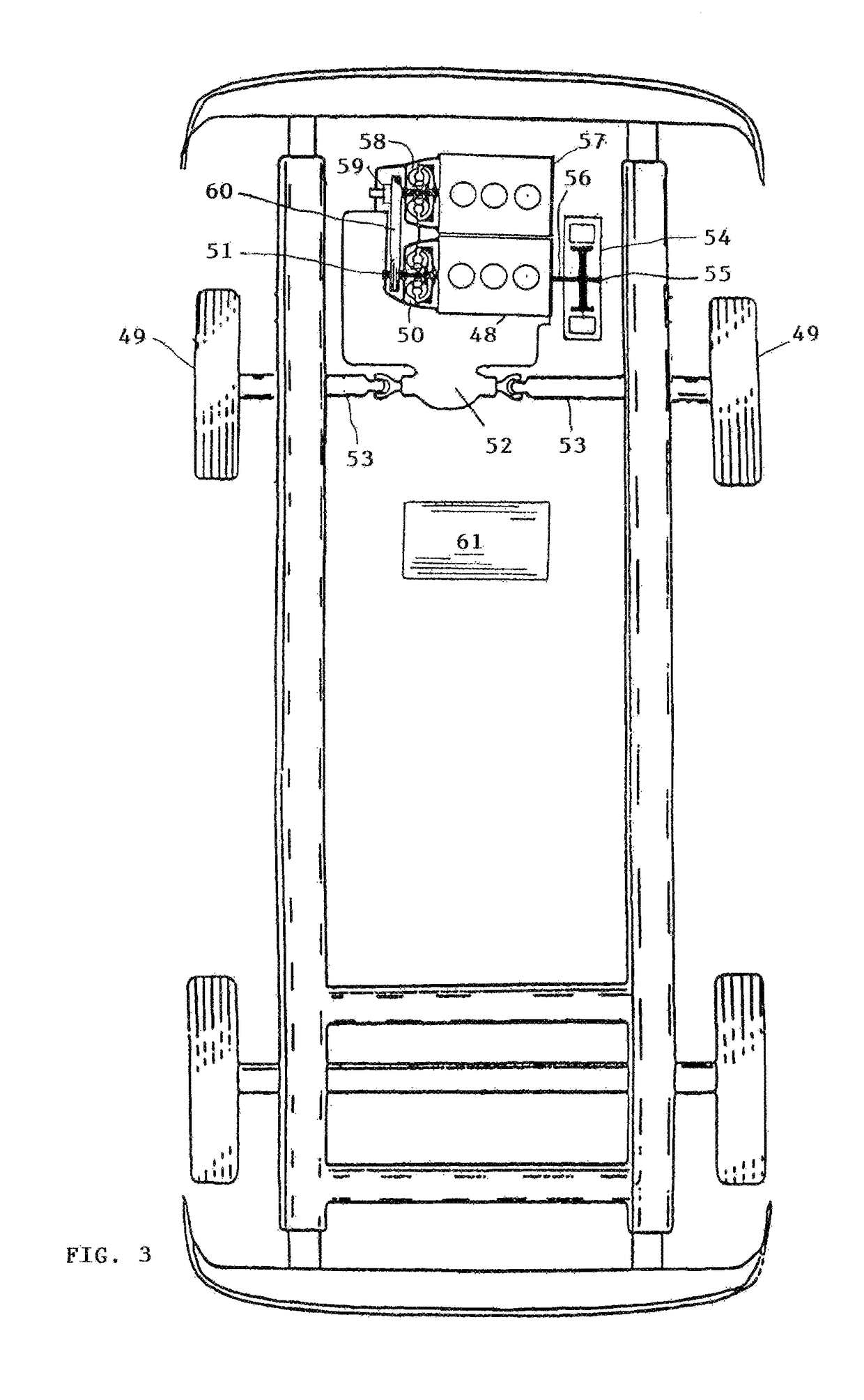Vehicle system
a hybrid vehicle and vehicle technology, applied in the field of vehicles, can solve the problems of inability to meet the needs of the buying public, poor acceleration and mechanical performance of hybrid vehicles, and high cost of hybrid vehicles, so as to maximize the fuel economy of cruising, improve fuel economy, and substantial additional power
- Summary
- Abstract
- Description
- Claims
- Application Information
AI Technical Summary
Benefits of technology
Problems solved by technology
Method used
Image
Examples
Embodiment Construction
[0034]Referring now to the above drawings wherein one character designates one part of the vehicle, FIG. 1 shows a vehicular chassis 11 connected to a bumper 12 and another bumper 13 and supported by a pair of wheels 14 and another pair of wheels 15. One of the bumper 12 and the another bumper 13 is a front bumper, and the other one of the bumper 12 and the another bumper 13 is a rear bumper. One of the wheel 14 and the wheel 15 is a front wheel, and the other one of the wheel 14 and the wheel 15 is a rear wheel.
[0035]Referring to FIGS. 1 and 7, a primary engine 16, mounted on the chassis 11, has a flywheel 17 coupled to a primary fluid torque converter 18 whose output shaft 19 transmits the power from the primary engine 16 to a transaxle 20, thence to two halfshafts 21 and the pair of wheels 14. The transaxle 20 is a combination of a speed change transmission and a differential. A secondary engine 22 is mounted on the chassis 11, and an axis of rotation of crankshaft of the seconda...
PUM
 Login to View More
Login to View More Abstract
Description
Claims
Application Information
 Login to View More
Login to View More - R&D
- Intellectual Property
- Life Sciences
- Materials
- Tech Scout
- Unparalleled Data Quality
- Higher Quality Content
- 60% Fewer Hallucinations
Browse by: Latest US Patents, China's latest patents, Technical Efficacy Thesaurus, Application Domain, Technology Topic, Popular Technical Reports.
© 2025 PatSnap. All rights reserved.Legal|Privacy policy|Modern Slavery Act Transparency Statement|Sitemap|About US| Contact US: help@patsnap.com



